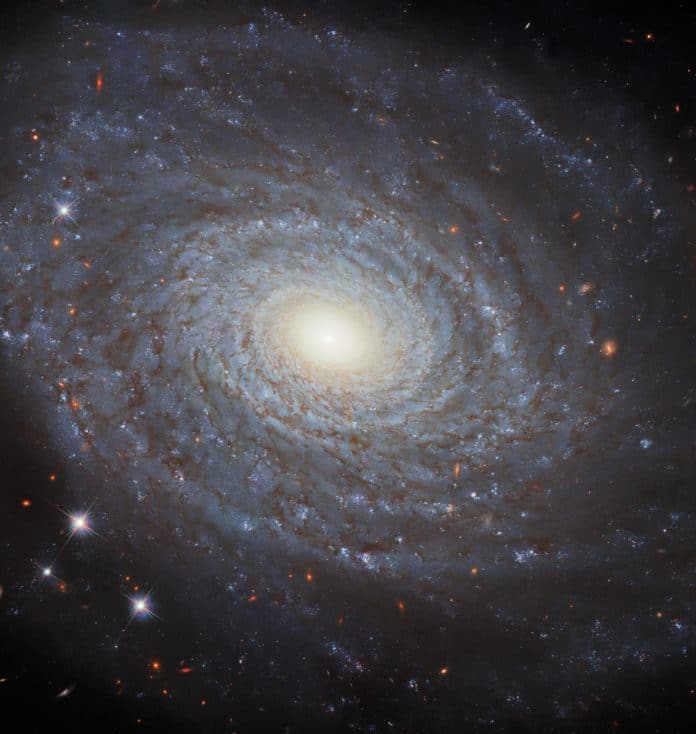Recently, Hubble captured an unbarred spiral galaxy called NGC 691 that is about 130,000 light-years across. Originally discovered on November 13, 1786, by William Herschel, the galaxy is also known as UGC 1305, CGCG 482-023, MCG +04-05-019, PGC 6793.
Located about 120 million light-years from Earth in the constellation Aries, the galaxy features a multiple-ring structure. Scientists have recognized three rings in infrared with diameters of 1.03, 1.67, and 2.79 arcminutes.
This galaxy is part of the galaxy group known as NGC 691, which is named after it. The galaxy group is made up of gravitationally connected galaxies. Given its apparent dimensions, means that NGC 691 is about 130,000 light years across.
The total star formation rate of the galaxy is estimated to be about 0.6 M☉ per year. It has a type Ia supernova called NGC 691, SN 2005W.
In Feb 2005, Yoji Hirose discovered a type Ia supernova called SN 2005W at the center of NGC 691.
This image was captured by Hubble’s Wide Field Camera 3 (WFC3).
